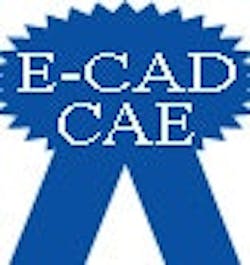E-CAD/CAE II: State of the Art
Last month, I presented a brief history of the progression of E-CAD/CAE tools as they became more powerful and provided far more integrated capability for users.
Most CAE system vendors now have developed new object-oriented data models, which form the basis for modular electrical engineering design. This means, in order to start working on a design project, its no longer essential to begin with drawing the ladder diagrams. The newly developed data models and associated object-oriented database systems now make it possible to process several parts of a CAE project concurrently. Furthermore, relevant project information can be entered into the system at almost any sensible stage of the design process, rather than in a particular order. This is a major step toward supporting simultaneous engineering.
Meanwhile, the majority of CAE vendors have made their products highly scalable. They offer a variety of bespoke software modules for various purposes, which can be customized and combined to form customer-specific engineering packages. Furthermore, most systems allow users to adapt the language of menus and system commands, as well as that of printing options, to meet their own or their customers specific requirements.
Another key feature of third-generation CAE systems is the support of variant design and an efficient reusability of existing design projects to create product families. Currently, the majority of CAE users prefer variant design approaches that allow for automated generation of complete project documentations based on product configuration using modular standardized components. Accordingly, some system vendors developed low-budget add-ons based on Microsoft Excel or Access that can be linked to their customers product data management systems. To date, all these solutions are of a proprietary nature.
Significant progress has been made with regard to design-to-manufacture integration. Some of the established high-end CAE systems on the market provide modules to support switch cabinet engineering automatically. This involves algorithms for optimized cable routing, as well as tools for producing labeled cables of the right type, diameter and length. Modules to support cable harnessing also are available.
Regarding standardized international data exchange, much progress has been made involving international standard ISO 10303, which is known informally as STEP (STandard for the Exchange of Product model data). STEP has been under development since 1984, and in use since 1994. Its scope is much broader than that of other existing CAD data exchange standards. STEP consists of a number of components, so-called application protocols, which define data models on which translators for CAD data exchange are based.
Benefits of Contemporary Technology
Most E-CAD/CAE software systems on the market these days offer a high potential for cost and time reduction, an increase in productivity, and significant improvements with regard to quality of designs, projects, and project documentations.
Top-of-the-range systems also support design automation and automated product configuration, efficient reusability of existing designs and projects, and concurrent engineering. Furthermore, they can be integrated into an enterprises CAE environment in order to exchange data with other significant systems, such as PDM, PLM, or ERP.
Some vendors offer high-caliber CAE packages developed to support cross-disciplinary engineering, such as an integration of electrical and mechanical packages and software development systems in order to develop mechatronic products more efficiently. Furthermore, they support global collaborative engineering, international standardized data exchange, and efficient mechanisms for collaboration in distributed settings.
Dr. Dirk Schaefer, assistant professor at the Woodruff School of Mechanical Engineering, Georgia Institute of Technology, Savannah, Ga., explores the boundaries between engineering and information technology principles, addressing product modeling, variant design, CAD systems realization, and ECAD-to-MCAD integration. Learn more at www.coe.gatech.edu/academics/me.php


